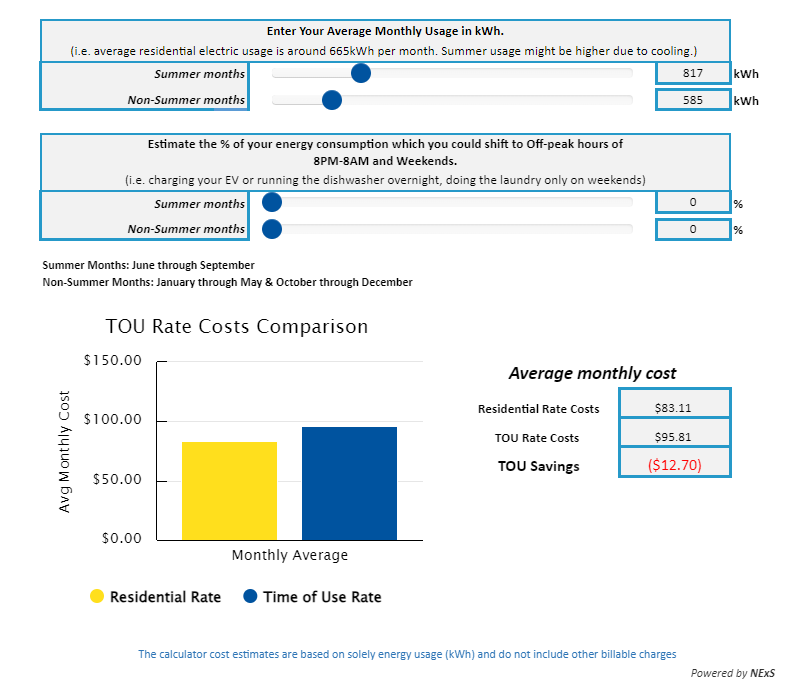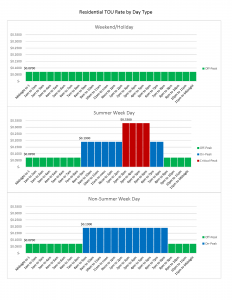What is the Residential Time-of-Use Rate?
The residential time-of-use (TOU) rate gives you an opportunity to lower your annual energy costs by changing when you use electricity. However, if you use electricity during peak hours or excessive electricity during off-peak hours, your costs may be higher while participating in this program.
It is important to note that no refunds will be given if the rate results in a higher bill.
Click on the chart to the right to see the daily breakdown for each TOU period for both summer months and non-summer months.
To see what the rates look like over a summer or non-summer week, view this document: Charts For TOU Marketing Weekly pdf (67 KB) .
For more information check out our frequently asked questions or call our customer service department at 507-451-2480 option #3.
ALREADY KNOW YOU WANT IN? Fill out the enrollment form and email it to our customer service department.
TIME OF USE CALCULATOR
Controlling and shifting your energy load is good for the grid as well as your wallet. Load shifting is not a new concept, but has come into focus in recent years due to energy costs and grid resilience. Load shifting could be as simple as using a timer on your appliances, or a remote control of devices such as lighting, stove or sauna. Signing up for the TOU rate while shifting your load, could result in additional savings.
Want to know if Time-of-Use (TOU) rate is a good option for your household?
Find out by entering your average monthly usage in kWh. Keep in mind, summer months are considered higher usage months due to air conditioning. However, if you have electric heat, your winter months might be on the high end as well.
You can access the last 12 months of your usage by logging into your account portal here. For current rates, see the enrollment form.
Next, estimate a percentage of your energy usage which you could shift to Off-Peak hours of 8:00 p.m. to 8:00 a.m., weekends and holidays (New Year’s Day, Memorial Day, Independence Day, Labor Day, Thanksgiving Day and Christmas Day). Examples of such activities would be:
- Scheduling or delaying your dishwashing to run overnight.
- Saving your laundry chores for the weekend.
- Setting your thermostat to a precooling mode during off-peak hours, or using a scheduling mode to optimize operations around your schedule.
- Charging your EV overnight, after 8PM.



